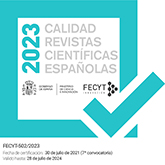La gestión ecológico-cultural en el paisaje de montaña
DOI:
https://doi.org/10.3989/pirineos.1992.v140.172Keywords:
Cultural ecology, authomatism, conservation, grasslands diversity, "bocage", artisanats, embodied tourism, organized/town, SpainAbstract
The author, after a brief revision of his ideas on the plant communities dynamism —connected with behavioural gregarism and cultural evolution in the N Spain mountains—, explain two furthest types of gestion: 1) The external or distant one, producing a banalization or ruderalization of landscapes, and 2) The internally active type in every system, always improving adaptation of communities to the environment (geophysical, biotic and also social) of their own valley or country. On cultural aspects —mainly in some mountains—, models will be necessary to understanding the different "homeostatic mechanisms" in every cultural action, the automatic ones. Ecological research must be made together with pasturage activities, artisanats, and mainly an integrated tourism embodied in the country. Biological and cultural diversifications would be also maintained in the more human and alive mountains. We also need to combine our regional activities with the more general project SBI (Sustainable Biosphere Initiative) of the Ecological Society of America.
Downloads
Download data is not yet available.
Downloads
Published
1992-12-30
How to Cite
Recoder, P. M. (1992). La gestión ecológico-cultural en el paisaje de montaña. Pirineos, 140, 53–73. https://doi.org/10.3989/pirineos.1992.v140.172
Issue
Section
Articles
License
Copyright (c) 1992 Consejo Superior de Investigaciones Científicas (CSIC)

This work is licensed under a Creative Commons Attribution 4.0 International License.
© CSIC. Manuscripts published in both the printed and online versions of this Journal are the property of Consejo Superior de Investigaciones Científicas, and quoting this source is a requirement for any partial or full reproduction.All contents of this electronic edition, except where otherwise noted, are distributed under a “Creative Commons Attribution 4.0 International” (CC BY 4.0) License. You may read here the basic information and the legal text of the license. The indication of the CC BY 4.0 License must be expressly stated in this way when necessary.
Self-archiving in repositories, personal webpages or similar, of any version other than the published by the Editor, is not allowed.













